Adaptogenic herbs help us relieve ourselves from daily stress that we encounter at home and at our workplaces. Find out about the most common adaptogenic herbs in this post.
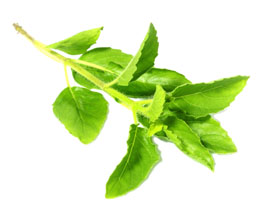
Adaptogenic herbs are the herbs that help us adapt to being under stress of all kinds - physical, environmental and emotional. The collection of herbs that are now identified as adaptogenic have been in fact known to man for quite some time already. Earlier these herbs were also called rejuvenating herbs. As the names suggest, these herbs help more in rejuvenating the mind, body and soul rather than specifically relieving a particular disease or disorder. They increase the quality of life and help strengthen our constitution such that we are less prone to falling sick in the first place. Many a time the main reason why we fall ill is because of stress. When we are stressed, our body is tired and our immunity lowered, so that we are more prone to falling ill. Adaptogenic herbs take care of illnesses at this level, at the root cause. This goes on to only illustrate and emphasize their use today. 10 Most Common Adaptogenic HerbsAshwagandha (
Withania somnifera)
Active Constituents - alkaloids like withanine, somnine, tropine, steroidal lactones (like withanolides), withaferin-A (suggested to have anti-metastatic activity).
Uses - Relieves stress, relieves fatigue, anti-inflammatory, sedative, to control diabetes, boosts immunity. There have also been instances of the use of Ashwagandha to treat tuberculosis and even Parkinson's disease. The use of ashwagandha as a sedative can be predicted from its scientific name too - 'somnifera', the species name of the herb, means 'sleep-inducing' in Latin.Rhodiola (
Rhodiola rosea)
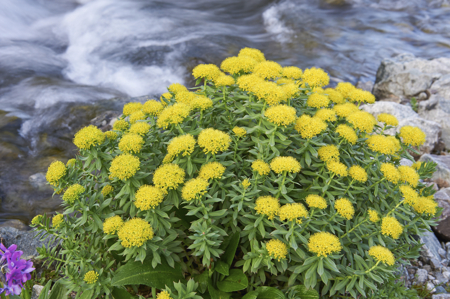
Active Constituents - polyphenols like rosavin, tyrosol, antioxidants like gallic acid, chlorogenic acid, essential oil extracted from rhizome contains monoterpene hydrocarbons and several classes of alcohols.
Uses - Anti-retroviral (i.e. anti-HIV), stress-reliever, anti-depressant, elevate serotonin and dopamine levels, etc. Since ancient times, Rhodiola has been used in Russian and Chinese medicine. Rhodiola has been successfully used to treat burnout patients plagued with extreme emotional fatigue. It improves concentration and relieves fatigue significantly.Eleuthero (
Eleutherococcus senticosus)
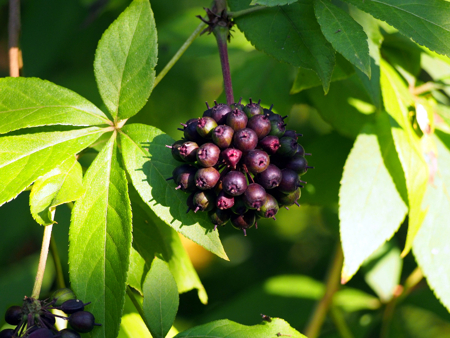 Active Constituents
Active Constituents - saponin, triterpene glycoside, isofraxidin, eleutheroside B, ciwujianoside A to E etc.
Uses - Anti-inflammatory, boosts immunity, anticholesteremic (lowers cholesterol), antioxidant, acts as a nervine (substance acting on nerves). Eleuthero is supposed to provide protection against harmful chemicals and also radiations. It relieves fatigue and is used in HPA-depleted patients (HPA - hypothalamus-pituitary-adrenal axis) - a condition that decreases functioning of the endocrinal and adrenal systems.Jiaogulan (
Gynostemma pentaphyllum)
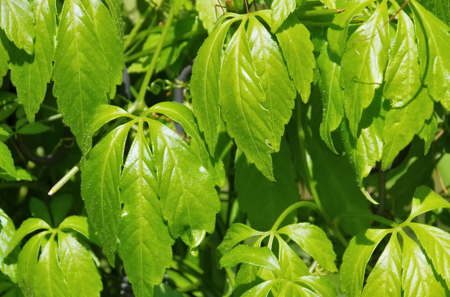 Active Constituents
Active Constituents - saponin and triterpenoid.
Uses - Establishes homeostasis in the body, deal with jet-lag, altitude sickness, balances out endocrine hormones, regulate blood pressure, improve vigor and stamina, reduce fatigue, etc. The herb improves cardiovascular function and even helps lower cholesterol and control diabetes. With respect to blood pressure it works by reducing hypertension and increasing hypotension both.Licorice (
Glycyrrhiza glabra)
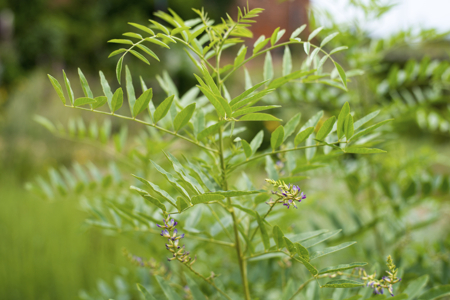 Active Constituents
Active Constituents - glycyrrhizin, glycyrrhizic acid, isoflavones, saponin, triterpenes, carbenoxolone, etc.
Uses - Alleviates sore throat, cough, balances and improves HPA, laxative, tonic, diuretic, expectorant, etc. The herb is in common use in Chinese alternative medicine. It helps modulate lung inflammation as well. It has also been shown to have antiviral effects and even affects the bodies endocrine system. It also act by preventing hyperkalemia.Reishi Mushroom (
Ganoderma lucidum)
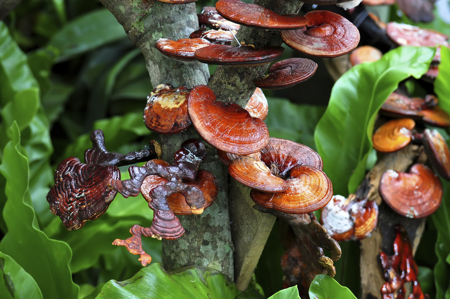 Active Constituents
Active Constituents - triterpene, ganoderic acid, steroids, polysaccharides, coumarins, alkaloids, etc.
Uses - Anti-tumor, boosts immunity, anti-carcinogenic, anti-neoplastic, etc. It helps in lowering blood sugar level. Reishi mushrooms also help control blood pressure. It helps control several microorganisms and pathogens. It has also been found effective in relieving liver diseases.Ginseng (
Panax ginseng)
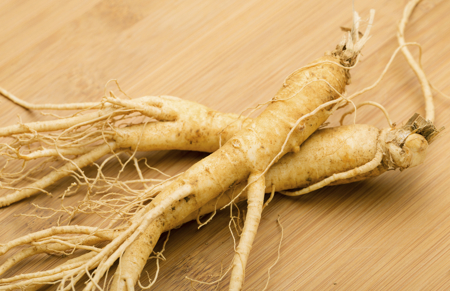 Active Constituents
Active Constituents - steroid, glycosides, saponins, triterpenes, etc.
Uses - Aphrodisiac, stimulant, antioxidant, anti-carcinogenic, etc. Ginseng has been used to relieve fatigue in cancer patients. This may have to do with the anti-carcinogenic properties of ginseng. It has also been suggested as a dietary supplement to improve quality of life among urban populations. Being a stimulant, it helps improve stamina and increase vigor. Holy Basil (
Ocimum sanctum)
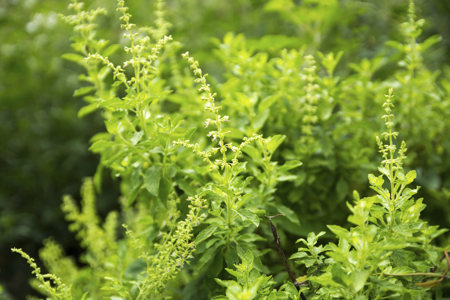 Active Constituents
Active Constituents - oleanolic acid, ursolic acid, rosmasinic acid, eugenol, linalool, etc.
Uses - Antioxidant, pain killer, protect against radiations, anti-hyperlipidemic, boosts immunity, etc. Holy basil will help get your cholesterol under control. The antioxidant properties help get blood sugar level in control. It can also be used to treat minor ailments such as a persistent cough, stomach problems, headaches, heart diseases and even malaria.Schisandra (
Schisandra chinensis)
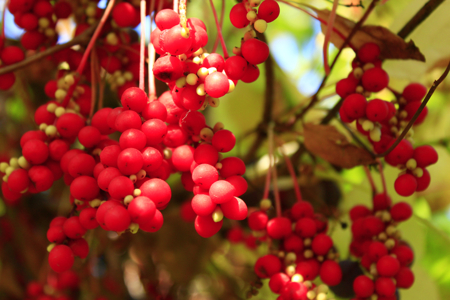 Active Constituents
Active Constituents - phytoestrogens such as schizandrin, deoxyschizandrin, gomisins, pregomisin, etc.
Uses - Homeostatic, stree-reliever, etc. In Russian ancient medicine it has been used to control hunger and thirst. Chinese medicine talks about the use of Schisandra to improve health of the heart and the kidneys, while in general it has been proposed to protect and keep the health of the liver. Japanese medicine on the other hand, makes use of Schisandra to treat sea-sickness. Noni (
Morinda citrifolia)
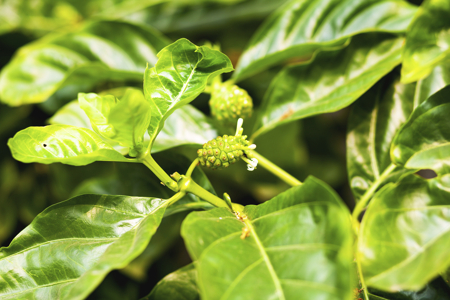 Active Constituents
Active Constituents - polysaccharides, flavonoids, fatty acids, catechin, alkaloids, etc.
Uses - Antioxidant, relieves stress and fatigue, antinociceptive (prevent/curb effect of noxious stimuli), anti-inflammatory, etc. Noni is the new rage among adaptogens. It has been proposed to have positive effects in breast cancer patients. It has also been shown to elevate the overall quality of life, especially among urban populations. Traditionally it has been used to relieve menstrual cramps and treat urinary tract infections. Some Other Adaptogenic Herbs ➦ Dang shen
➦ Maca
➦ Guduchi
➦ Cordyceps
➦ Shatavari
➦ Chaga mushroom
➦ Amla
➦ Agaricus
➦ Astragalus
Ayurveda is full of names of various adaptogenic herbs. However, for lack of scientific evidence these are not in common use. However, with growing awareness, the day is not far when the wealth locked away in the Ayurveda will become available to everyone.In common, all adaptogens help tackle stress trauma, anxiety, fatigue, and overall reduced or lowered levels of energy. Adaptogens thus are a boon in today's fast paced world where one does not even have the time to sit down and breathe! Adaptogens may not have specific pin-point effects on the body; but something that improves the body's central nervous system, the endocrinal system, cardiovascular system, boosts immunity, and helps tackle 'new-world' or modern health problems such as hypertension, high blood sugar and cholesterol is surely something we must all include in our daily diet, don't you think? Adaptogenic herbs improve your strength and vigor and arm you with health that can sustain such a hectic life as we live today.






 Adaptogenic herbs are the herbs that help us adapt to being under stress of all kinds - physical, environmental and emotional. The collection of herbs that are now identified as adaptogenic have been in fact known to man for quite some time already. Earlier these herbs were also called rejuvenating herbs. As the names suggest, these herbs help more in rejuvenating the mind, body and soul rather than specifically relieving a particular disease or disorder. They increase the quality of life and help strengthen our constitution such that we are less prone to falling sick in the first place. Many a time the main reason why we fall ill is because of stress. When we are stressed, our body is tired and our immunity lowered, so that we are more prone to falling ill. Adaptogenic herbs take care of illnesses at this level, at the root cause. This goes on to only illustrate and emphasize their use today. 10 Most Common Adaptogenic HerbsAshwagandha (Withania somnifera)Active Constituents - alkaloids like withanine, somnine, tropine, steroidal lactones (like withanolides), withaferin-A (suggested to have anti-metastatic activity).
Adaptogenic herbs are the herbs that help us adapt to being under stress of all kinds - physical, environmental and emotional. The collection of herbs that are now identified as adaptogenic have been in fact known to man for quite some time already. Earlier these herbs were also called rejuvenating herbs. As the names suggest, these herbs help more in rejuvenating the mind, body and soul rather than specifically relieving a particular disease or disorder. They increase the quality of life and help strengthen our constitution such that we are less prone to falling sick in the first place. Many a time the main reason why we fall ill is because of stress. When we are stressed, our body is tired and our immunity lowered, so that we are more prone to falling ill. Adaptogenic herbs take care of illnesses at this level, at the root cause. This goes on to only illustrate and emphasize their use today. 10 Most Common Adaptogenic HerbsAshwagandha (Withania somnifera)Active Constituents - alkaloids like withanine, somnine, tropine, steroidal lactones (like withanolides), withaferin-A (suggested to have anti-metastatic activity). Active Constituents - polyphenols like rosavin, tyrosol, antioxidants like gallic acid, chlorogenic acid, essential oil extracted from rhizome contains monoterpene hydrocarbons and several classes of alcohols.
Active Constituents - polyphenols like rosavin, tyrosol, antioxidants like gallic acid, chlorogenic acid, essential oil extracted from rhizome contains monoterpene hydrocarbons and several classes of alcohols. Active Constituents - saponin, triterpene glycoside, isofraxidin, eleutheroside B, ciwujianoside A to E etc.
Active Constituents - saponin, triterpene glycoside, isofraxidin, eleutheroside B, ciwujianoside A to E etc. Active Constituents - saponin and triterpenoid.
Active Constituents - saponin and triterpenoid. Active Constituents - glycyrrhizin, glycyrrhizic acid, isoflavones, saponin, triterpenes, carbenoxolone, etc.
Active Constituents - glycyrrhizin, glycyrrhizic acid, isoflavones, saponin, triterpenes, carbenoxolone, etc. Active Constituents - triterpene, ganoderic acid, steroids, polysaccharides, coumarins, alkaloids, etc.
Active Constituents - triterpene, ganoderic acid, steroids, polysaccharides, coumarins, alkaloids, etc. Active Constituents - steroid, glycosides, saponins, triterpenes, etc.
Active Constituents - steroid, glycosides, saponins, triterpenes, etc. Active Constituents - oleanolic acid, ursolic acid, rosmasinic acid, eugenol, linalool, etc.
Active Constituents - oleanolic acid, ursolic acid, rosmasinic acid, eugenol, linalool, etc. Active Constituents - phytoestrogens such as schizandrin, deoxyschizandrin, gomisins, pregomisin, etc.
Active Constituents - phytoestrogens such as schizandrin, deoxyschizandrin, gomisins, pregomisin, etc. Active Constituents - polysaccharides, flavonoids, fatty acids, catechin, alkaloids, etc.
Active Constituents - polysaccharides, flavonoids, fatty acids, catechin, alkaloids, etc.